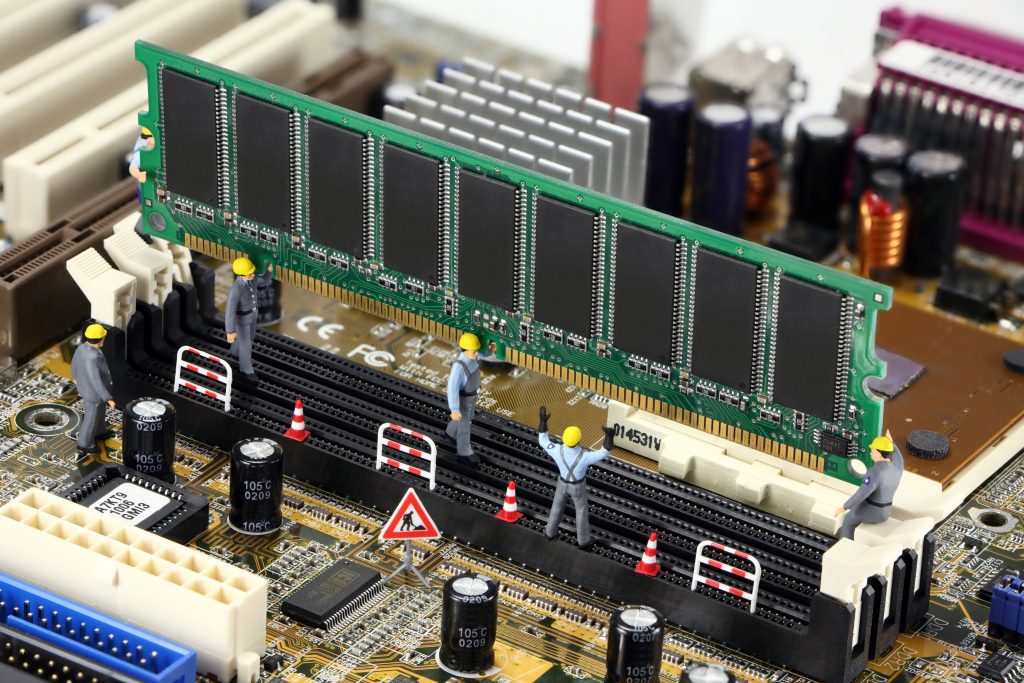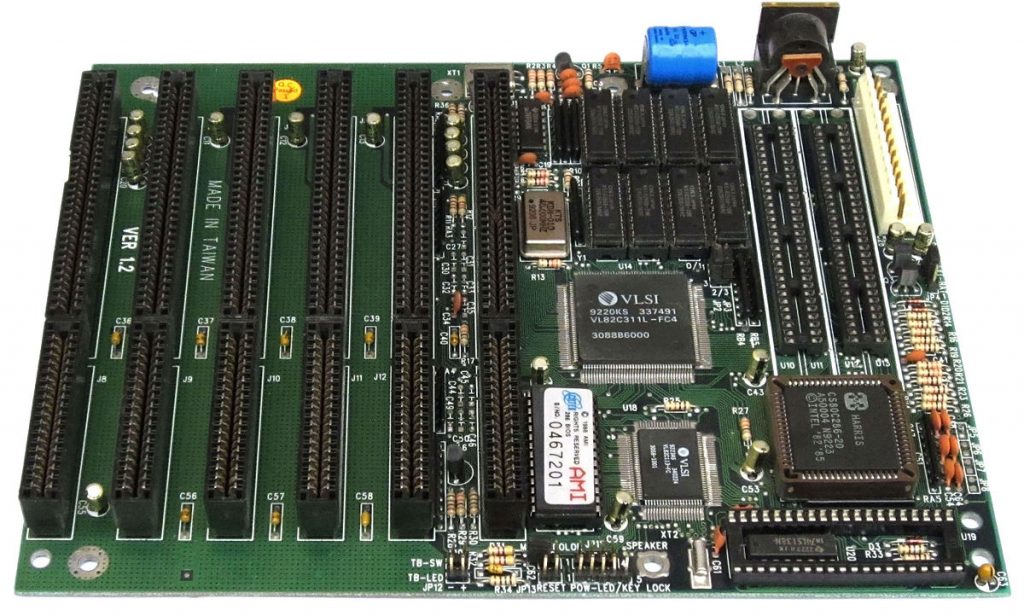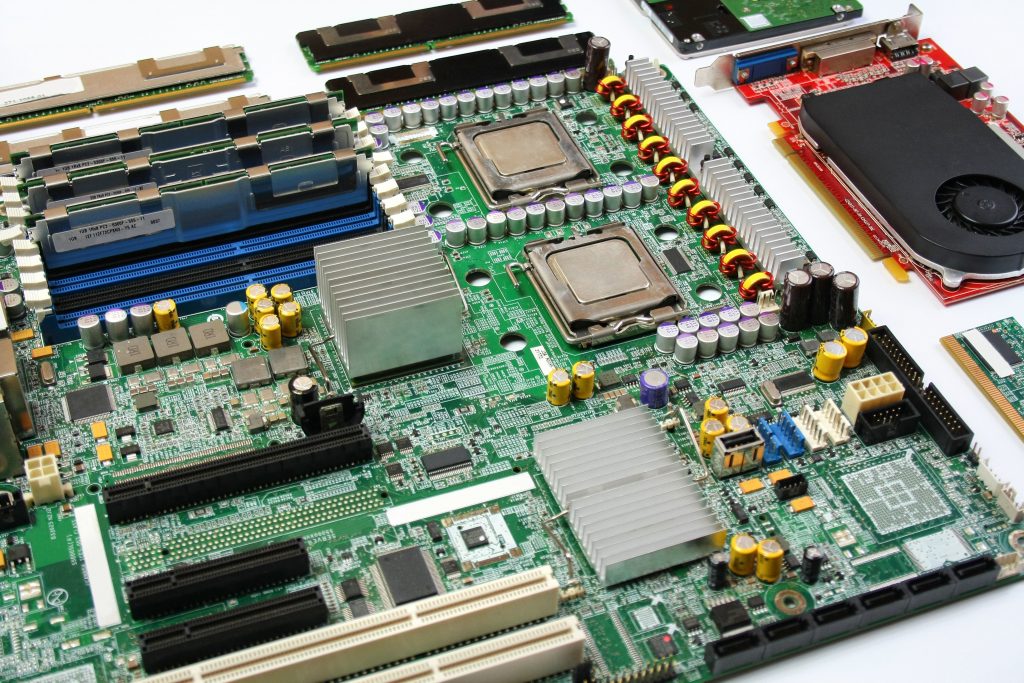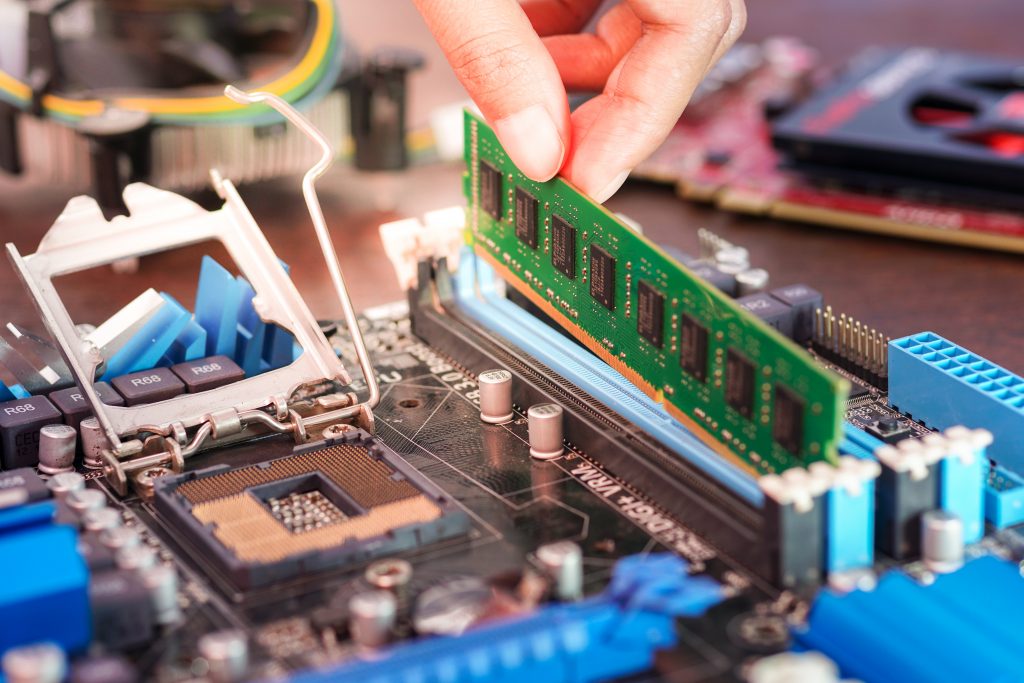How To Find What Ram Is Compatible With My Computer
Every calculating device has RAM used for its computational operations. Random Access Retentiveness Bank check Latest Price is a hardware component of the computer also as a fast and short-term volatile memory. In this article, you volition understand RAM compatibility and the of import things you should know about it.
How Practise I Know What RAM Is Compatible?

Agreement RAM compatibility from PC to PC and RAM size to another RAM size is a huge upshot. Especially for many figurer users who want to maximize their PC capabilities and to practice more with fewer PC resources . What further complicates the event is that at that place are myriads upon myriads out at that place to choose from . Made past several manufacturers, these RAM types operate at various clock speeds.
A first step to knowing the RAM size and clock speed that is compatible with your PC model or motherboard and other related RAM data is to press CTRL + SHIFT + ESC on your keyboard. This will open the "Task Manager", navigate through to the second tab titled "performance" and click on the "Memory Row". This will display the RAM properties that are specific to your machine.
The information displayed on the retentivity tab lets you know which RAM blazon is uniform with your PC and which are not. Following these steps volition let you know what RAM is uniform with your system. Also as the current size installed and the clock speed it runs at and how many additional slots are empty.
Types of Motherboards
On every assembled or branded tablet, laptop, PC, or mobile device, in that location is the center of the device – the motherboard. It is a circuit organisation that contains other subsystems to which other important peripherals are straight installed or connected. The motherboard is the primary printed circuit lath present in computers that concur other electronic components of the system together. Motherboards are adamant largely based on form factors, the most common is the ATX, and others are ITX, NLX, and LPX.
AT Motherboards

The earliest computers used the oldest motherboards called the Advanced Technology (AT). AT motherboards fabricated use of advanced applied science (AT) power connectors that were available during the early on '80s. As well, there are two power connectors of half-dozen pin each mounted on it. Owing to the size of the motherboards, it was difficult to install new peripherals. And at the same time, it was easy to damage the motherboard from inserting a component in the wrong place.
ATX Motherboards

This is an upgrade by Intel to the Avant-garde Engineering science (AT) motherboards. The Advanced Technology Extended (ATX) motherboards were born in the '90s and are still currently used. Different their previous counterpart, they allow the interchangeability of connected parts without damage and are generally much smaller in size.
LPX Motherboards

The depression profile extension motherboards or LPX motherboards were created in the '90s after the creation of AT motherboards by Western Digital. LPX motherboards comprise output and input ports at the back of the motherboard and utilize riser card slots for serial, parallel, video, and PS/2 ports.
How Much RAM Is Supported By My Motherboard?
The reply to many figurer-related hardware questions commonly contains the phrase "it depends". Well, this question is no different besides. How much RAM your motherboard tin can support depends on the capabilities of the motherboard in question.
Different PC from different manufacturers accept specs of the maximum amount of RAM supported by the specific PC type and into how many slots the RAM can become into. To find out how much RAM is specifically supported by your PC motherboard:
- Check with your manufacturer's website
- Google the full PC name and check the mentioned spec for the maximum RAM it can support
- Endeavour using the Memory Compatibility Tool to check for RAM motherboard compatibility or
- Use a third-party software like CPU-Z or HWinfo to check for compatibility
Is RAM Compatible With Any Motherboard?
How to check my motherboard RAM compatibility e.g. Asus motherboard RAM compatibility? For example, let's assume your PC supports memory modules for upward to 8GB RAM and yous try to use a 12GB RAM. The system may not be able to properly read the installed RAM. Significant, your motherboard or processor won't support the faster memory speed that is supposed to be provided by the bigger RAM. When this happens, the modules are clocked at the highest speed the motherboard can accommodate. For case, a motherboard and CPU that supports memory up to 2133 MHz can use 2400 MHz RAM but only run it up to 2133 MHz.
Similarly, having a reckoner that uses DDR3 RAM and you want to install DDR4 RAM wouldn't work. Considering they utilize different clocking technologies and are not uniform with hardware and software standards. This means that if the motherboard specifies DDR3 RAM, and then its DDR3 RAM but that should go into the RAM slot. All other RAM wouldn't work.
Tin can I Use 1600 Mhz RAM In The 1333 Mhz Motherboard?
Yes, you can employ 1600 MHz RAM in the 1333 MHz motherboard. The trouble here is that you'd exist wasting precious resources like money, except if it was gifted to yous by someone or you lot made a wrong purchase. The drawback to this is that putting a higher 1600 MHz RAM in 1333 MHz motherboard wouldn't utilise the total speed of the RAM. An interesting ascertainment to take annotation of is that RAM runs at a speed different from the speed it is sold at. If information technology is sold at the maximum speed of 1600 MHz, information technology is guaranteed to work at that speed or less.
For example, a 1600 MHz RAM volition piece of work at 1600 MHz or less. That is to say, a 1600 MHz RAM will work at 1333 MHz just fine. Alternatively, to unlock the full potential of your RAM, you can overclock your motherboard. This will result in the apply of the full 1600 GHz capacity and increment ameliorate system performance. In a worst-case scenario of using a higher RAM for a 1333 MHz motherboard, the system may not even boot.
Does RAM Speed Have To Friction match Motherboard?
Yeah, information technology does and no it doesn't have to match the motherboard. But to be on the safer side of things, both the RAM speed and the specific motherboard specs should match for optimum PC functioning.
Cases grow where higher clock speeds other than the clock speed supported past the motherboard take been known to piece of work and no problems were said to be encountered in such instances. If there were whatever recorded drawbacks to these instances, it is only that the PC was running at the clock speed specified by the motherboard and non at the college frequency RAM spec.
Generally speaking, most laptops or desktop computers come up with two or more slots for RAM sticks. This is peculiarly true for most recently produced laptops and desktops. To fill these slots and to overcome the drawback of using smaller RAMs, while aiming to maximize the computing capabilities of your PC, then y'all must understand RAM to PC compatibility. This is considering information technology is highly appropriate to apply RAM sticks made past the same manufacturer, of the aforementioned size, and having the same frequency ratings supported past your motherboard type
Can I Mix And Match RAM? (RAM Compatibility With Other RAM)

It depends. Depending on what your computer can back up, you may be able to mix and match RAM or you may non. Once more, it all depends on how the figurer's motherboard was designed by the specific manufacturer. Mix-matching RAM may work in some systems, and in other systems, information technology may dethrone the system performance. Your definition of mix-matching as well matters here. PC motherboards support specific slots for RAM retentiveness or you can say that the slot modules are keyed. Pregnant that there is a specific slot type for DDR2, DDR3, and DDR4 RAM memory types and mix-matching in this sense is highly unlikely.
If the two RAM types you want to mix and match are DDR4 for case, then chances are they are going to work. In cases where 2 same DDR4 RAM of unlike speeds are used, the result will be that the estimator will default to the speed of the slowest RAM nowadays. Mix matching can also mean using RAM from different brands together on the same PC. If it's the aforementioned DDR blazon, information technology would work irrespective of the brand differences they have.
Tin can I Use 1333 MHz And 1600 MHz RAM Together?

Yes, you can apply 1333 MHz and 1600 MHz RAM together especially if your PC supports more than 8GB of RAM. If your PC still supports 8GB or lower, in that location is still no problem as your PC will revert to using the smaller of the two MHz sizes for both of the 1333 MHz and 1600 MHz RAM sizes installed. The newly installed RAM wouldn't be able to run as "Dual Channel". Dual-channel is an optimization mechanism that doubles the bandwidth of RAM. Just this wouldn't work considering you lot are now using two dissimilar RAM sets that fail to meet the criteria for dual-channel implementation on your PC.
Upgrading Your RAM: All You Need To Know
You need to be armed with certain data before you can make the correct choice of what blazon of RAM (eastward.g. DDR4 or DDR3 or DDR2 RAM) and what RAM size to upgrade to. To do this correct, you need to know the blazon of RAM your PC motherboard supports and the maximum size the PC tin can accept. Other information to look out for is the clock speed of the RAM in MHz.
If y'all're getting two RAM sticks or more, then advisably the two should accept a matching MHz size. Some other data to look out for is the number of RAM slots you lot have on your motherboard. Generally, PCs similar laptop or desktop come with two and in a higher place slots. Having confirmed such details, y'all can then become ahead and purchase the appropriate RAM size that your PC supports.
To install the newly purchased RAM make sure your PC is turned off. Then utilise a screwdriver to lose the back of the arrangement case where the RAM resides after which you lot place the new RAM in the empty slot there. Shut back the case and re-screw the nut, and then turn on the PC, and voilà your RAM is upgraded.
5 Best RAM You Should Endeavor
There are tons of unlike RAMs out there for you to endeavor. Here are 5 best RAM choices to try based on your needs:
ane. Best DDR4 RAM
M.Skill Trident Z RGB is one of the all-time RAM out there. This is not just because information technology'south fast, but considering it features xiv to 19 latency which makes it awesome for all kinds of apply having an well-nigh perfect speed of up to 4,266.
2. Best DDR3 RAM
This RAM product line offers some of the all-time DDR3 RAM on the market today. Built for speed and performance, it has a latency of 9 to 11 and share speeds of 1866MHz to 2666MHz.
three. Best LED RAM
Corsair is a trusted proper noun in the earth of computing. Corsair RAM gives off a maximum functioning with compatibility to well-nigh of the DDR4 RAMs. This RAM series features CL16 latency and whopping speed of 3,466 MHz
4. Best Laptop RAM
Designed for SODIMMs, Crucial RAM Ballistix Sport is ideal for employ in near laptops. It supports groovy multitasking capabilities and saves power while at it keeping you covered.
5. Best Gaming RAM
Are yous looking to build a high-end gaming rig? Then y'all'd want to use this RAM. This is because the RAM is available for frequencies of upwards to 5,000MHz and features anti-overheating capabilities.
The next fourth dimension you decide to purchase a RAM attempt to check for compatibility and become for the best so as to become optimum performance.
How To Find What Ram Is Compatible With My Computer,
Source: https://storables.com/data-storage/random-access-memory/ram-compatibility-important-things-you-should-know/
Posted by: kahnpritter.blogspot.com



0 Response to "How To Find What Ram Is Compatible With My Computer"
Post a Comment